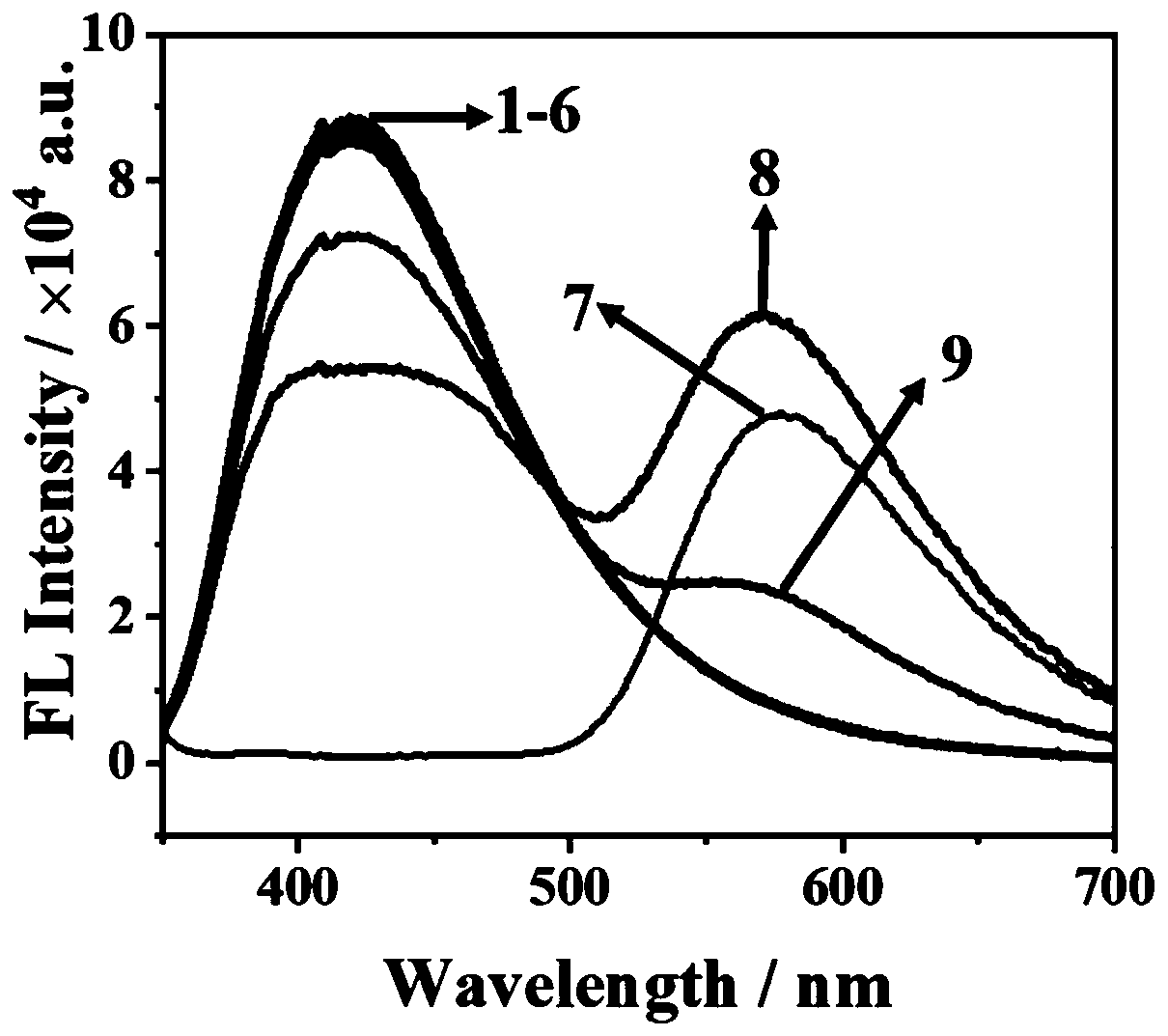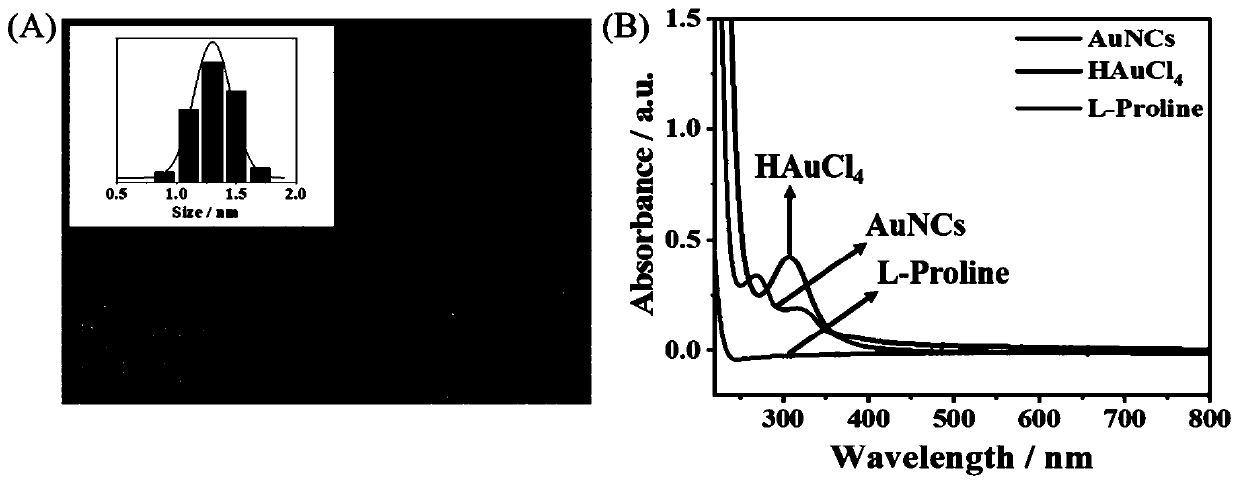Mercury ion detection method based on enzymatic reaction double-emission fluorescent probe
A double emission fluorescence, enzymatic reaction technology, applied in the field of fluorescence biological detection
- Summary
- Abstract
- Description
- Claims
- Application Information
AI Technical Summary
Problems solved by technology
Method used
Image
Examples
Embodiment 1
[0044] (1) In several 90 μL LACC PBS solutions (laccase concentration is 90mU / mL), respectively add 50 μL concentrations of 0,0.8,1,1.5,2,3.5,5,6.5,8,10,15,20, 35μM Hg 2+ Standard solution, incubate at 37°C for 60 min.
[0045] (2) Add 75 μL of OPD in PBS (the OPD concentration is 80 μM) to the mixed solution prepared in step (1), and incubate the mixture solution at the same temperature for 70 minutes, laccase catalyzes the oxidation of OPD to produce luminescent DAP;
[0046] (3) Synthesis of AuNCs solution;
[0047] HAuCl 4 (32.0mL, 3.0mM) The aqueous solution is heated to boiling at 140℃, and 8mL (10M) L-proline solution is quickly dropped into the boiling HAuCl 4 After heating and stirring for 10 minutes, cool to room temperature. Centrifuge at 10000rpm for 15min, collect the supernatant and store at 4℃.
[0048] The TEM characterization results of AuNCs are as follows image 3 As shown in A, it has good monodispersity, with an average particle size of 1.3nm; the UV absorption s...
PUM
 Login to View More
Login to View More Abstract
Description
Claims
Application Information
 Login to View More
Login to View More - R&D
- Intellectual Property
- Life Sciences
- Materials
- Tech Scout
- Unparalleled Data Quality
- Higher Quality Content
- 60% Fewer Hallucinations
Browse by: Latest US Patents, China's latest patents, Technical Efficacy Thesaurus, Application Domain, Technology Topic, Popular Technical Reports.
© 2025 PatSnap. All rights reserved.Legal|Privacy policy|Modern Slavery Act Transparency Statement|Sitemap|About US| Contact US: help@patsnap.com



